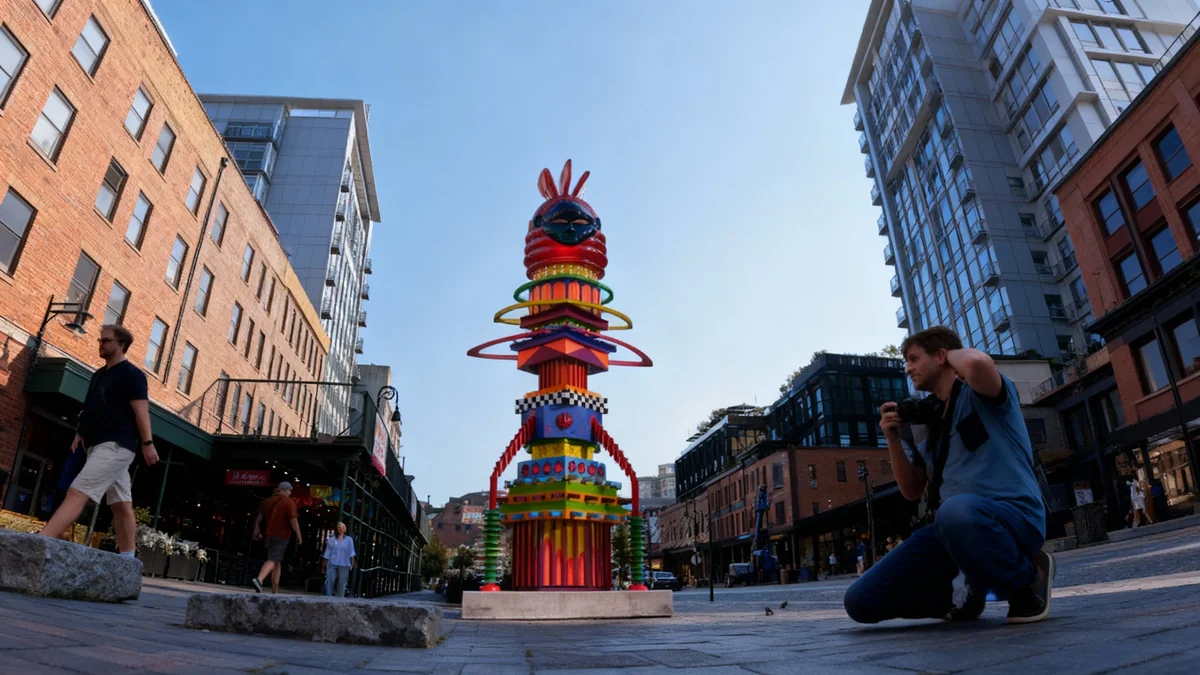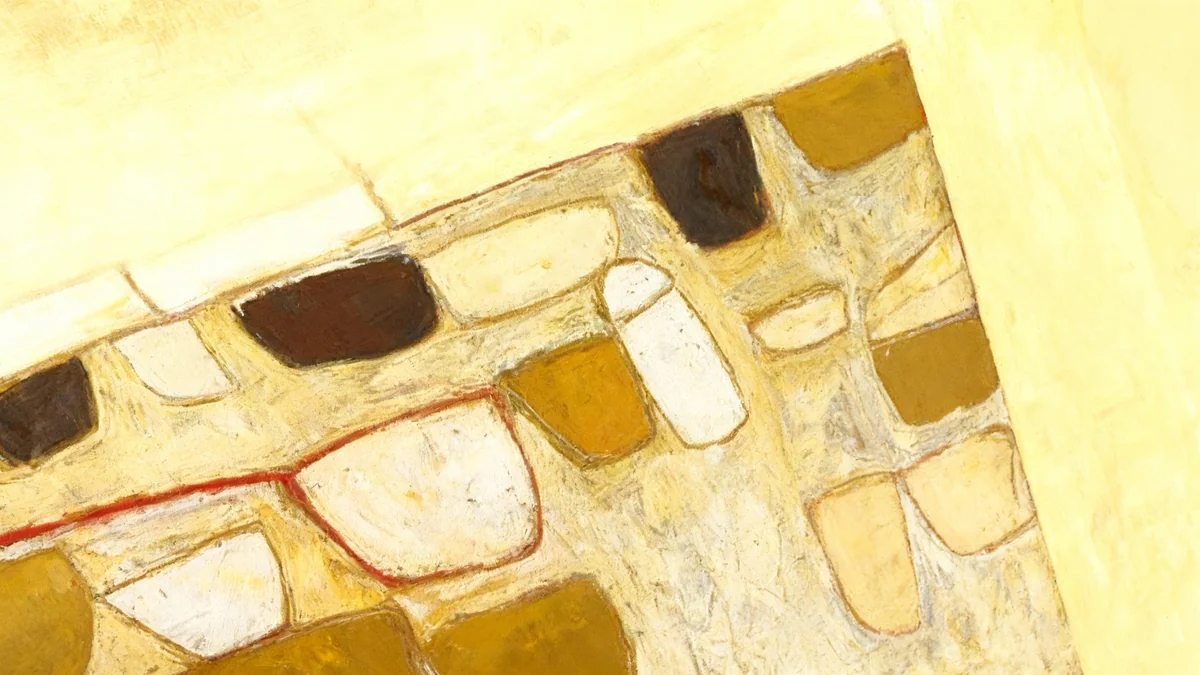Emily Mason, a prominent American abstract painter, navigated a unique artistic path, drawing inspiration from diverse figures like Willem de Kooning and John Cage. Her work, characterized by vibrant color and fluid technique, evolved significantly through her connections with the New York School and her embrace of Eastern philosophy. Mason consistently resisted strict categorization for her art, preferring to let her work speak for itself.
Key Takeaways
- Emily Mason's art blended Abstract Expressionist techniques with a unique focus on color and structure.
- She was influenced by both Willem de Kooning and John Cage, an unusual combination in her generation.
- Mason adopted innovative painting methods, often working on flat surfaces before moving to the wall.
- Her work shows an early sensitivity to Eastern philosophy, particularly Zen Buddhism, influenced by John Cage.
- Mason emphasized an indirect, intuitive approach to painting, often quoting Emily Dickinson.
Early Life and Influences from the New York School
Born into an artistic family, Emily Mason was exposed to the vibrant New York art scene from a young age. Her mother, Alice Trumbull Mason, an abstract painter herself, introduced Emily to key figures and movements. This early exposure shaped Mason's foundational understanding of art.
In 1972, when asked about her artistic classification, Mason stated,
“I really resent that but if somebody said, ‘What kind of painter are you?’ I guess I’d say Abstract Expressionist.”This response highlights her reluctance to be confined by labels. By 2005, her answer reflected a more nuanced perspective, acknowledging she was "probably a product of Abstract Expressionism" while also quoting John Cage: "Get your mind out of the way."
John Cage, a pivotal figure in the avant-garde, arrived in New York in 1942. His involvement with the New York School, particularly at The Club, coincided with Mason's formative years. The Club served as a central gathering point for Abstract Expressionists, where Mason, as a teenager, interacted with prominent artists. This environment fostered a rich exchange of ideas and influences.
Fact: The Club
The Club, located at 39 East 8th Street, was founded in 1949. It became the unofficial headquarters of the New York School, providing a private space for artists to meet, discuss, and socialize. It played a crucial role in the development of Abstract Expressionism and beyond.
Willem de Kooning, a leading figure of the New York School, and John Cage, a pioneer of process art and conceptual art, were two highly influential artists. It is uncommon for a painter to cite both as mentors. However, Mason uniquely integrated their differing philosophies into her practice, steering American art in new directions.
Innovative Techniques and Artistic Philosophy
Mason belonged to a generation of artists who moved beyond traditional easel painting. Influenced by techniques developed by artists like Jackson Pollock and Helen Frankenthaler, she explored painting on flat surfaces. This approach allowed artists greater freedom to move around their work, even stepping onto it.
Pollock's "action painting" and Frankenthaler's "soak and stain" methods opened new possibilities. Mason would often begin a painting flat, pouring paint and tilting the surface to control its flow. This dynamic process created a dialogue between the artist and the artwork, allowing for both controlled and spontaneous movements. The work would then transition to a wall for completion.
While her work clearly showed Abstract Expressionist techniques, Mason's approach differed from the more assertive style of many male artists of the era. Her focus on color expression and structure resonated more with the subtle sincerity of Mark Rothko. For both Mason and Rothko, painting was not merely about depicting an experience; it was an experience in itself.
"The paintings seemed to work from whatever angle one chose to look at them. The whole secret lay in freeing oneself from the force of gravity."
Willem de Kooning on Italian Renaissance artists
Mason greatly admired de Kooning's mastery of oil painting and his non-literal approach to art. She often quoted his self-description as a "glimpser," a term she felt applied to herself.
"I like it. I work indirectly, I am not confronting anything, but just sort of letting it come out,"she explained. This philosophy aligned with her belief that memories, impressions, and feelings inform art in a meandering, indirect way. One of her favorite Emily Dickinson poems, "Tell all the truth but tell it slant," further reflected this indirect approach.
Connections and Support from Fellow Artists
Elaine de Kooning, despite her tumultuous marriage to Willem, maintained an independent stylistic development and was a respected art critic. After Mason married Wolf Kahn in 1957, Elaine remained a close friend and a supportive figure for both artists. They frequently exchanged artworks, and Elaine would often babysit Mason's daughters, Cecily and Melany, in the late 1960s and early 1970s.
Background: Women Artists of the Era
During a period of significant feminist awakening, many women artists, like Elaine de Kooning, chose to prioritize their artistic careers. Elaine, who never had children of her own, was a godmother to Ibram Lassaw’s daughter and a mentor figure for Mason’s children, offering both artistic guidance and life advice.
Cecily Mason recalls Elaine de Kooning's strong and fun personality, often trying poker and gin rummy strategies with the girls. Elaine's advice,
"Always be dressed to do somersaults, forward and backwards,"encouraged independence and readiness for anything, reflecting the spirit of the times.
Joan Mitchell was another significant female artist of the era who achieved notable gallery shows. Around 1953–54, Mason initially found Mitchell's work "too Expressionist." However, a conversation with Ibram Lassaw, a long-time family friend, encouraged her to look deeper. Lassaw's advice, "[If] you feel uncomfortable about it maybe there is something there that you should look at more," prompted Mason to reconsider.
Mason and Kahn visited Mitchell in Paris in the summer of 1958. Mason recounted to Robert Wolterstorff,
"I was appalled at first, but I thought, ‘there’s more here that I am not letting in.’"Mitchell's energetic marks and pictorial structure made a lasting impression. This influence can be seen in Mason's "Wet Paint Spring" (1963), with its calligraphic lines over thin washes, echoing works like Mitchell's "Garden Party" (c. 1962).
Return to New York and Eastern Philosophical Influences
After her European travels, Emily Mason settled back in New York in 1965. Within a year, she produced significant works that marked a new phase in her career. Paintings such as the luminous "Equal Paradise" and "Stillness is Volcanic," both from 1966, demonstrate her extraordinary ability to convey light and create highly sensual surfaces. These pieces pushed beyond the boundaries of traditional Abstract Expressionism.
The textural quality of these paintings, with their sophisticated color contrasts and reflectivity, brought to mind the work of Zao Wou-Ki, a Parisian Chinese Art Informel painter. This early indication of an Eastern sensitivity in Mason's work became progressively more evident over time.
The 1950s through the 1970s saw a growing interest in East and South Asian philosophy among the Beat generation and hippies. Many in the creative community explored meditation and Buddhism. While Mason was not a Buddhist, she practiced meditation and adopted certain Zen principles. Her engagement with Eastern philosophy likely began through John Cage at The Club.
John Cage, frustrated with Western art's focus on ego, turned to Eastern philosophy and its concept of vacuity. Influenced by Buddhism, Cage advocated for letting go of intentions during the creative process. He was particularly interested in the philosophy of Japanese Zen Master D. T. Suzuki.
Kay Larson, in her study of Cage and Zen Buddhism, notes that Cage had allies at The Club, including Ibram Lassaw, whose favorite religion was Zen. Cage and Lassaw attended Suzuki's lectures at Columbia University in 1952. Lassaw's interest in Buddhism dated back to the early 1930s, meaning young Mason would have been exposed to these ideas through him and later through Cage.
Art historian Valerie Hellstein states that during The Club's early years (1949-1955), Zen Buddhism was the most discussed topic, explored in relation to music, art, and psychology. Cage himself lectured six times on the subject. Although no attendance records exist, it is highly probable Mason was in the audience for some of these discussions, given her deep receptiveness to Cage's teachings throughout her life.
Did You Know?
John Cage's take on Zen Buddhism offered a counterpoint to the often self-involved and emotional intensity of Abstract Expressionists. He believed art could either reinforce the ego or "open the mind to the world outside, and outside inside."
Mason, like Cage, cultivated the art of letting go. In 1975, discussing her creative process with Lona Foote, Mason said,
"I like to feel that I work on a painting until something magical happens. Until it becomes something outside of myself, a new vision… You lose a kind of control, but you gain something else."In her finest works, the painting seemed to emerge as a natural phenomenon, guided by forces beyond the artist's conscious control. She initiated the process and then followed its lead, often stating, "Not knowing is my mantra." This intuitive approach allowed her to act as a conduit, revealing visions she herself did not fully comprehend until the work was complete.




